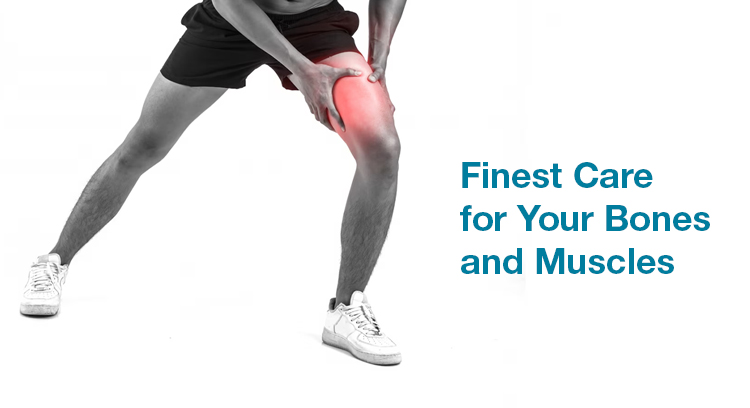Bone Dexa
DEXA, which stands for Dual-energy X-ray Absorptiometry, represents an enhanced form of X-ray technology crucial for precisely diagnosing osteoporosis, a condition that makes bones fragile and weak. In the orthopaedic department at Apollo Hospitals in Jubilee Hills, this advanced technology is employed to assist doctors in identifying low bone density, indicating an increased risk of fractures. In addition, it provides insights into body fat percentage. The procedure is both quick and painless.
DEXA scanning involves lying on your back on an X-ray table while a specific area of your body is scanned. For patients who have already received an osteoporosis diagnosis, the DEXA scan is helpful in assessing changes in bone density as a response to treatment.
How is a DEXA Scan useful?
DEXA bone densitometry is mainly used for diagnosing osteoporosis, a condition commonly affecting postmenopausal women but also found in men. Osteoporosis results in a gradual calcium loss, leading to thinner, more fragile bones prone to fractures. The DEXA test not only diagnoses osteoporosis but also assesses the risk of developing fractures.
If low bone density is identified, collaborative efforts between you and your physician can formulate a treatment plan to prevent fractures. DEXA is also effective in monitoring the impact of osteoporosis treatment or other conditions causing bone loss. Bone density testing is particularly recommended if you:
- Are a postmenopausal woman not taking estrogen.
- Have a personal or maternal history of hip fracture or smoking.
- Are a tall postmenopausal woman (over 5 feet 7 inches) or a thin one (less than 125 pounds).
- Are a man with clinical conditions associated with bone loss.
- Use medications known to cause bone loss, including corticosteroids, certain anti-seizure medications, or high-dose thyroid replacement drugs.
- Have type 1 diabetes, liver disease, kidney disease, or a family history of osteoporosis.
- Exhibit high bone turnover, evident through excessive collagen in urine samples.
- Have a thyroid condition such as hyperthyroidism.
- Experienced a fracture after mild trauma or have x-ray evidence of vertebral fracture or other osteoporosis signs.
Preparing for the Procedure:
- On the day of the exam, maintain a normal diet.
- Avoid calcium supplements for at least 24 hours before the procedure.
- Wear loose and comfortable clothing.
- Avoid garments with metal zippers, belts, or buttons.
- Medical History Disclosure:
- Inform your physician if you recently had a barium examination.
- Disclose any recent injections with a contrast material for CT or radioisotope scans; a waiting period of 10 to 14 days may be required before a DEXA test.
- Women should inform their physician or x-ray technologist about the possibility of pregnancy.
The DEXA bone density test typically lasts 10 to 30 minutes, depending on the equipment and body parts examined. Here’s how the procedure is performed:
- You may be asked to undress and wear a hospital gown.
- Lie on a padded table with an x-ray generator below and a detector above.
- The focus is often on bone loss in the spine and hip, common sites for osteoporosis-related fractures.
- Legs supported on a padded box to flatten the pelvis and lower spine.
- Detector passed over the spine area, generating images on a computer monitor.
- Foot placed in a brace rotating the hip inward.
- Detector passed over the hip area, capturing images on a computer monitor.
- Peripheral DEXA (pDEXA) Test:
- Simplified test where finger, hand, forearm, or foot is placed in a small device.
- Obtains a bone density reading within a few minutes.
- Less sensitive, especially in younger individuals, and not suitable for treatment monitoring.
- The procedure is efficient and provides crucial information about bone density in common fracture-prone areas.




